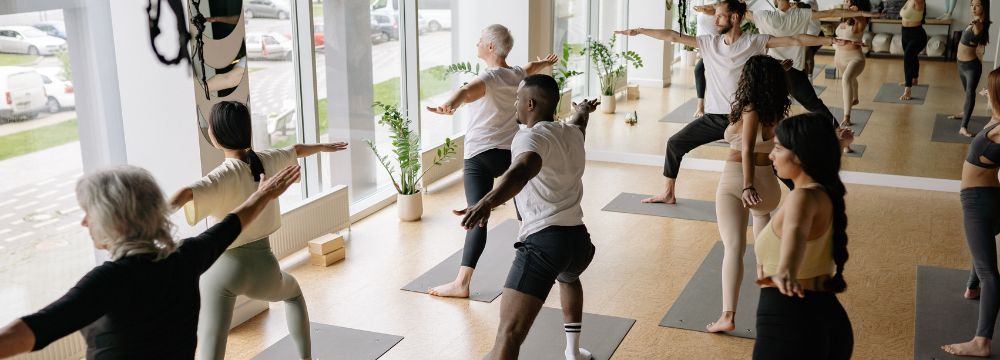Exercise

When you’re getting serious about improving your health through weight loss, the idea of bringing running into your exercise routine can sound intimidating. After all, runners should be stick-thin and super-fast, right? Wrong! While speed-of-light runners like Usain Bolt get all the attention, most runners have far from perfect bodies. Plus, running is easily adaptable to different levels of ability. And at an average of 100 calories burned per mile, it’s also a MAJOR metabolism boost and a great addition to your weight-loss strategy. Here, we provide ten steps to launch a running regimen — even if you’ve never done it before.
- Start with your doctor. If you’re new to running or exercise in general, getting clearance from your weight loss surgeon before beginning is always a good idea. Some people with certain chronic conditions — like heart disease, high blood pressure, or asthma — may not be able to safely participate in vigorous activities like running. If that’s the case, your doctor can advise on exercise that can improve your health without causing other problems. Walking, for example, is something that most people can do.
- Find the right shoes. Once your doctor clears you to run, your first order of business is to find a pair of shoes that will support you as you move. Many people rely on shoe recommendations from friends, but everyone’s feet are different, and what works for them may not work for you. Your best bet is to head to a brick-and-mortar shoe retailer so you can try before you buy. Once you’ve found a pair you like, run a few steps in the store to ensure they don’t slip or feel too tight. If you can, go to a specialty running store — in addition to helping you try on shoes, the staff will also be able to look at your gait (the way you move your legs and feet when running) and help further narrow down your choices.
- Be aware of your form. Everyone holds their body differently when they run, and when you take your first running steps, you’ll naturally fall into the form that feels best. But while you shouldn’t force your body into an uncomfortable position, you can make a minor change to minimize your risk of injury. These include:
- A slight lean: Tilt your upper body slightly forward when running instead of hunching your shoulders or leaning back. This will help your body absorb the stress each time your foot lands on the ground.
- Forward-moving arms: As you move, ensure your arms move forward and back rather than across your chest; this can upset your balance and slow you down.
- Small steps: Instead of taking giant gazelle-like leaps, which can expend additional energy, use smaller, more frequent steps.
- Head up: Look at the horizon or the sidewalk ahead when you run, not at your feet. This will help keep your head, neck, and back correctly aligned.
- Go slow and short. Don’t feel pressured to keep up with friends or cover a certain distance. Go at a good pace and stop when you feel uncomfortable. Many beginners start by running intervals — for example, running for 30 seconds, walking for one minute, then repeating. Even if you walk more than you run, you’ll still get a significant calorie-burning boost. Don’t feel the need to go a long distance on your first few times out. This will minimize your risk of injury and ensure that running remains enjoyable.
- Rest. Schedule some off days even if you don’t feel achy after your first few runs. Running is stressful on your body, and rest days will help it recover properly. In your first few weeks, aim for running about three to four times a week at max, alternating a run day with a rest day. If you absolutely must be active on your rest day, choose a low-impact activity, like walking or swimming.
- Strength training to stay healthy. Regular strengthening exercises like crunches and squats help protect against injury by toughening up your muscles and joints. It can also improve your balance and even help you run faster! If you’re lost on which moves to perform, consider working with a personal trainer or attending a group strength class at a gym to get a foundation going. Check YouTube for videos of basic strength-training moves. Even if you don’t have weights, you can do plenty of bodyweight exercises to tone your muscles.
- Stretch. When you run, waste products such as lactic acid build up in your body; taking a few minutes to stretch after a run can help eliminate them and promote blood flow to your muscles, speeding your recovery. Hamstring, calf, and hip flexor stretches are popular among runners. If you don’t know how to do them, a simple web search should get you everything you need. When stretching, ensure not to force your body into a painful position, and aim to hold each stretch for about 30 seconds.
- Eat well. Contrary to popular belief, casual runners don’t need enormous amounts of carbohydrates. A balanced diet with plenty of fresh fruits and vegetables, lean proteins, and healthy fats will ensure your body has the proper fuel to recover. It will also help you achieve your weight-loss goals. (Most people do not need to consume carbohydrates like energy gels while running.)
- Be patient. Even elite runners experience not-so-great runs and minor injuries. Don’t let a setback turn you off from running altogether. Keeping at it will turn running into a habit — and as you become more fit, your runs will become easier. Before long, you’ll wonder how you got along without it!
- Find an appropriate surface to run on. What you run on can be the difference between joint pain and comfortable exercise. Treadmills at the gym are typically bouncy enough that they minimize harsh impacts on your joints. Run on the sand if you are able. Otherwise, running on softer surfaces like grass is very beneficial. Try to avoid running on hard surfaces like concrete.
The bottom line is that while running is typically considered a high-impact activity, there are plenty of ways to reduce detrimental effects on your joints. Further, consistently running within your physical limits can be an enjoyable way to lose weight and improve cardiovascular health. Of course, you should speak to your bariatric surgeon to ensure it is appropriate for your circumstances.
Related Topics:
- Exercise Tips to Make Your Workouts More Effective
- Is Swimming the Best Post-Bariatric Exercise?
- Motivation Comes From Within, Inspiration Comes From Everywhere
Resources:
- https://www.health.harvard.edu/healthbeat/do-you-need-to-see-a-doctor-before-starting-your-exercise-program
- https://www.runnersworld.com/gear/a20842305/how-to-buy-the-right-running-shoes/
- https://www.runnersworld.com/uk/training/beginners/a772514/how-often-should-you-run/
- https://www.runnersworld.com/training/a20074772/strength-training-for-runners/
- https://www.runnersworld.com/uk/health/a760484/the-rw-complete-guide-to-stretching-for-runners/
- https://www.runnersworld.com/uk/nutrition/diet/a39672411/runners-diet/
- https://www.runnersworld.com/uk/training/a775995/how-to-perfect-your-running-form/
- https://www.runnersworld.com/uk/training/a776453/why-you-shouldnt-run-tall/
- https://www.runnersworld.com/training/a20811603/perfect-running-form/
- https://www.verywellfit.com/how-many-calories-does-running-burn-2911108









